2008 Ford Mustang Cobra Jet - Click above for high-res gallery
Saturday afternoon we went for what may have been the shortest and quickest first drive in the history of Autoblog. When we go on a typical first drive with a manufacturer, we get to drive a vehicle around for at least a few hours in a variety of environments. Not so this past Saturday, when we tried out the latest customer race car product from Ford Racing, the Cobra Jet, a Mustang conceived at the behest of drag racers who wanted a factory built car ready to take to their local drag strip.
The original Mustang Cobra Jet appeared back in 1968 with a big, powerful engine and all of the interior bits normally stripped out by racers already absent. Those cars would go on to be some of the most successful factory-built drag cars ever. A year ago, Ford began preparing to build a run of 50 brand new cars bearing the legendary nameplate. Officially designated "FR500CJ," the new cars were delivered to customers last Fall and have been seen racing regularly at strips across the country throughout the year.
Photos Copyright ©2009 Sam Abuelsamid / Weblogs, Inc., lead image courtesy of Dale Amy
Several Cobra Jets ran in the hands of private teams during the NMRA Ford Nationals event at Milan Dragway this past weekend. The CJs rolled out of the factory powered by supercharged 5.4-liter V8 packing 425 hp in default tune. Since the Cobra Jet is able to run in a number of different classes, the engines in each car are tuned by individual teams to meet their own class rules. The only thing that Ford officials would tell us about the engine in the car we drove is that it was producing more than 425 hp. Our best guess is somewhere between 500 and 600 hp, likely closer to the latter judging by the low 11-second elapsed times that the car was able to produce in the hands of those more familiar with drag cars.
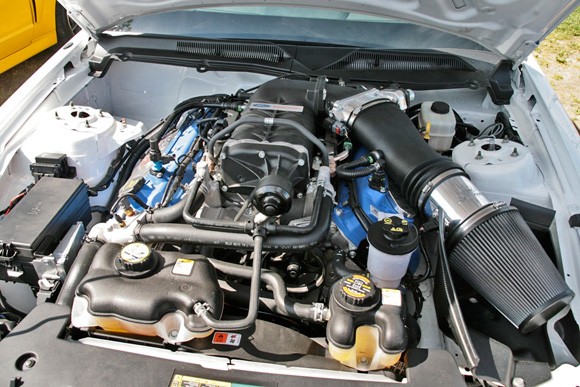
Since these cars are built for a very specific task, items like the dashboard are strictly of the low-rent base Mustang variety. The steering wheel is plastic, and there is no fancy leather or metal trim anywhere. Even the ventilation controls are strictly for show – attempts to turn on the A/C while waiting in the staging lane yielded no response. All 2008 Cobra Jets came fully equipped with a roll cage and five-point safety harness, making ingress and egress a bit more convoluted than normal.
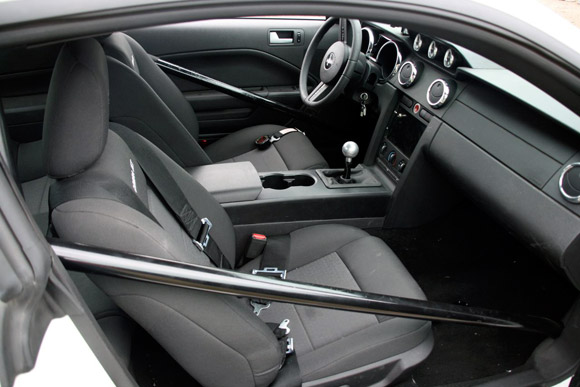
When I climbed in for Autoblog's turn, I turned the key and nothing happened. I then remembered the switch mounted on the right rear exterior corner above the tail-light. After squirming out again, I turned the main "kill" switch to the "On" position to enable the battery (the switch is on the outside for safety reasons in the event of an accident). After making my way back inside, I turned the key again and pressed the big red start button above the blank panel where the radio usually resides. The blown V-8 roared to life with an uncorked rumble that you only find in a real race car.
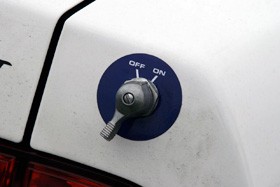
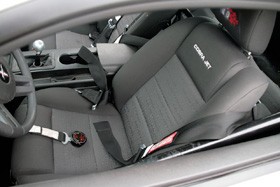
For those who have never driven a race car, getting belted up is not a trivial task. First, you have to pull up the center belt with the buckle from between your legs. Then the two lap belts go in from either side, and finally the shoulder belts come into play. Once you tighten each of these, there is no give like in a road car. Reaching for anything means pulling the release that pops all the belts and then starting all over.
For a car with this much power under foot, the clutch was remarkably light and the Cobra Jet proved commendably easy to drive out to the staging lanes. It was pretty much like driving a street GT500 – only a lot louder. Once in the staging lanes, Ford Racing spokesman Jesse Kershaw explained some of the esoterica of our competition drag car. The red button on the front of the shift knob was for the line locker. Pressing the brake pedal and then the line locker button holds the pressure in the front brakes. Now the brake pedal can be released and the front brakes are still applied until the red button is released – just the thing for the nice smokey burnouts needed to heat up those fat rear racing slicks.
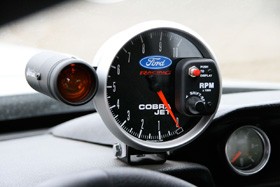
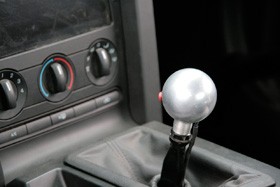
I was advised that the best technique for launching the car is to bring the engine up to 4,000 rpm and then just side-step the clutch when the light went green. That turned out to be the easy part, and I had a clean getaway that pushed me back hard in to the seat of the Mustang. Mounted up on top of the dash is a second large tachometer with a big yellow shift light on the side. As the needle rapidly swung up to 6,500 rpm, I pushed the clutch in and went to slide the shift lever back into second. I said: BACK INTO SECOND! Fortunately, my helmet and the roar of the V8 prevented me from hearing the snarky remarks of the announcer. Eventually, after what seemed like minutes but was in fact only about a second, cog #2 engaged.
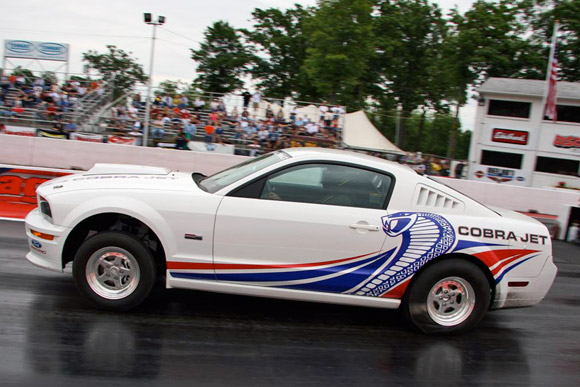
The rest of the 1,000 or so feet passed uneventfully, with third and fourth engaging without issue. Unfortunately, in drag racing, a single second is more than enough to spell the difference between victory and going home early. Since this was strictly an exhibition run, my 12.3-second elapsed time was merely embarrassing. At least the car didn't stall on the line. Nonetheless, the Cobra Jet is easily the fastest accelerating Mustang we've ever driven and among the fastest of any we've tried. Oh, well... there's always the 2010 model.
Photos Copyright ©2009 Sam Abuelsamid / Weblogs, Inc.
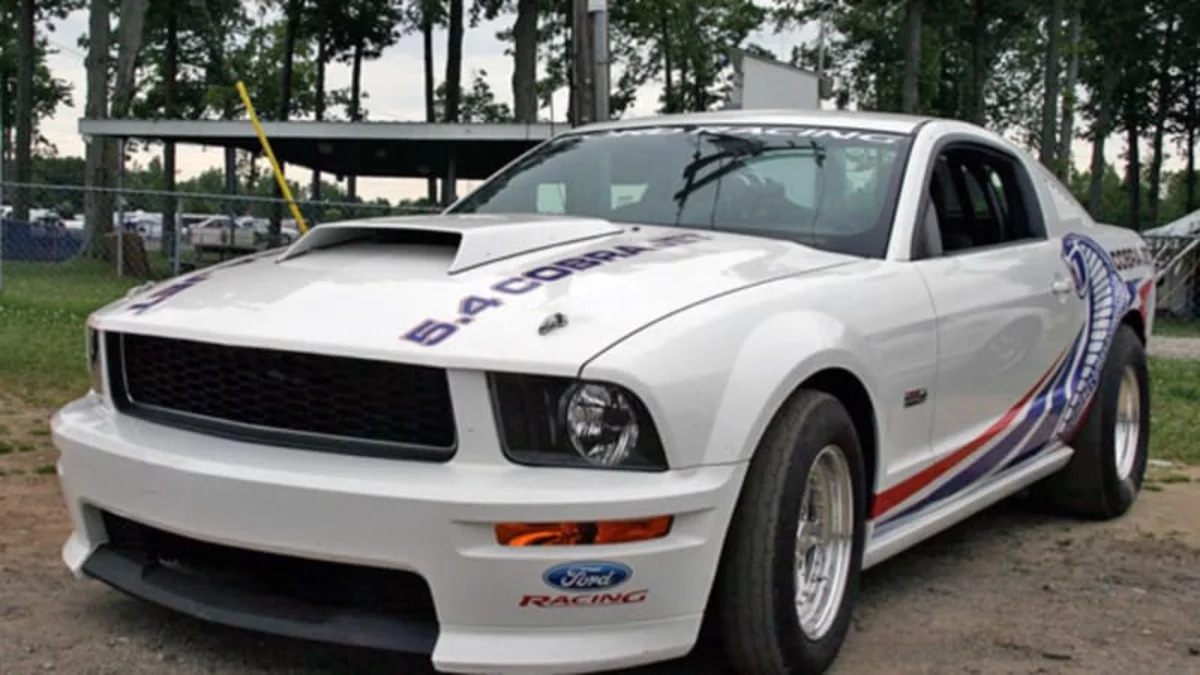


Sign in to post
Please sign in to leave a comment.
Continue